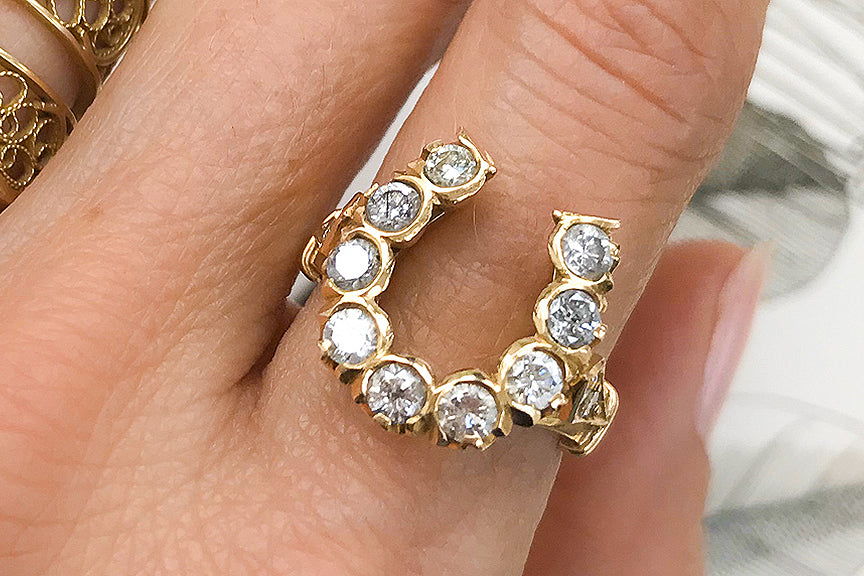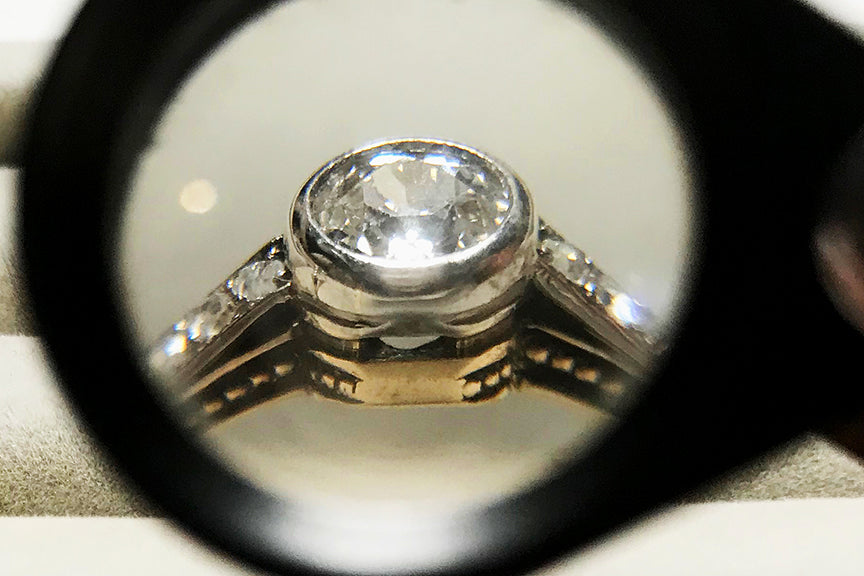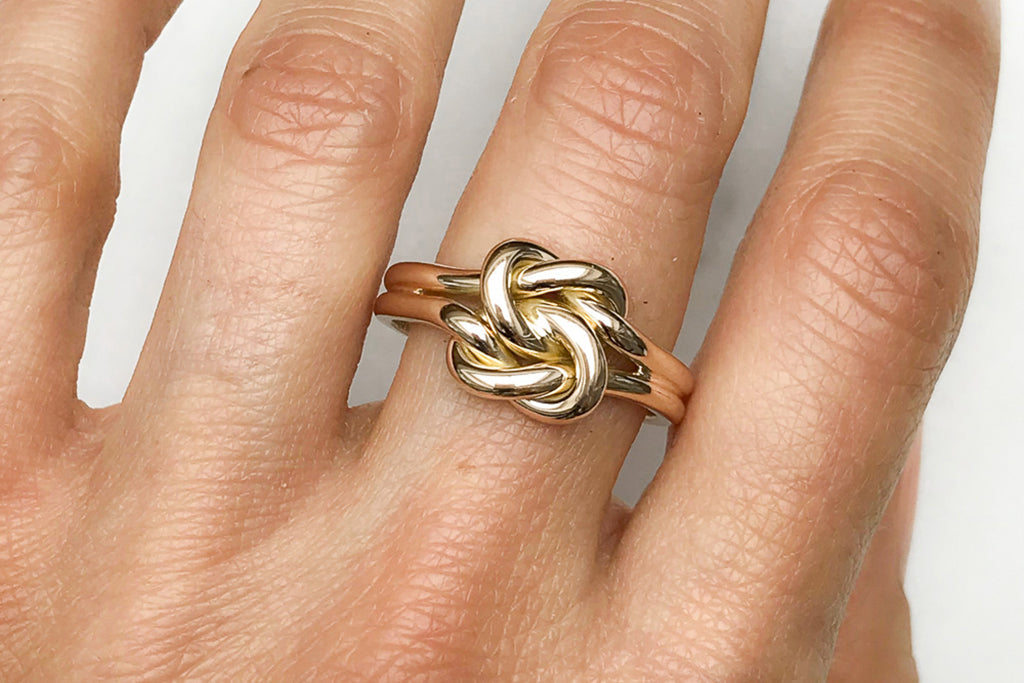
How Queen Victoria Inspired Four Classic Engagement Ring Styles
In June 1838, Queen Victoria stepped up to the throne aged just 18. Coinciding with the Industrial Revolution, her reign was a formidable one – some 63 years, during which time numerous inventions were ushered in that would go on to change the world, from the automobile to electricity and indoor plumbing.
The Victorian era had barely taken off before the young Queen’s portrait was plastered everywhere, from women’s interest magazines (which were rapidly gaining popularity) to newspapers, medallions and the walls of Britons’ homes. A youthful, spirited monarch who adored jewellery and clothes, and wore both liberally, Victoria quickly became something of a trendsetter. Never before had an individual been so well-documented.
Today, we look at four iconic engagement ring styles inspired by Queen Victoria and the beloved pieces in her jewellery box.
THE CLUSTER RING
A nimbus of sparkling diamonds encircling a sapphire or other coloured gem
 Flora
Flora
One of Queen Victoria’s favourite and most recognisable jewels was a sapphire cluster brooch designed by Garrard, the London-based jeweller behind many of the royal family’s treasures. A wedding gift from her beloved Albert, Victoria wore the brooch proudly in her bridal portrait.
Similar in style to Victoria’s famous brooch is the cluster engagement ring, a classic style that sees a nimbus of sparkling diamonds encircling a larger centrepiece. The concept was originally invented in the Georgian period as a means of enlarging and drawing attention to centre stones, but it was during the Victorian era that cluster engagement rings were romanticised, often resembling a flower, with the diamonds mimicking petals.
With their colourful centre stones and delicate diamond arrangements, Flora and Penelope are prime examples of Victorian cluster engagement rings that emulate the style of Queen Victoria’s sentimental brooch.
THE FLORAL RING
A nature-inspired design that resembles the petals of a flower
 Luella
Luella
The Victorian era saw the introduction of proper etiquette among society’s upper echelons, with a number of new rules prohibiting outright flirtations between individuals. At the same time, the expansion of the British Empire introduced Victorian Brits to all manner of exotic flora and fauna, provoking an explosion of interest in horticulture in the UK. Hand-in-hand, these developments saw fascination in floriography – or “the language of flowers” – soar. Before long, the gifting of beautiful flowers became a means of conveying emotions that couldn’t be addressed out loud; to send secret messages of interest, affection and desire. Different flowers were thought to embody different meanings, with tulips symbolising passion, bluebells representing kindness and purple violets conveying thoughts occupied with love, to touch on just a few.
To honour the tiara of fragrant orange blossoms she wore on their wedding day, Albert designed Victoria several romantic jewels with floral details over the years, including a gold and porcelain orange blossom brooch that was later joined by a matching pair of earrings. Subsequently, jewellery with flower emblems skyrocketed in popularity. Today, nature-inspired engagement rings remain a timeless romantic favourite.
Luella and Constance are engagement rings quintessential of the Edwardian era that closely followed Victoria’s reign, with their old-cut diamonds set to resemble a delicate flower.
THE HORSESHOE RING
A classic symbol of good luck, interpreted in precious stones

In 1839, Albert popped the question with the help of an exquisite snake ring. Its head set with an emerald – Victoria’s birthstone – and its eyes made from rubies, the serpentine jewel’s coils were said to symbolise eternal love, unstirred by life’s twists and turns. One of the first to be worn publicly as a sign of commitment, this ring was perhaps one of the most significant pieces of jewellery Queen Victoria ever owned. Five months later, the monarchs married, with each of Victoria’s 12 trainbearers receiving the gift of an eagle brooch thought to have been designed by Victoria herself, paved in turquoise and boasting a ruby eye, a diamond beak and pearls clutched within its claws. While each of these stones is highly symbolic in its own right, the eagle itself was perceived by the Victorians as an emblem of nobility, wisdom and power.
With Victoria’s devoted following now strongly established, it wasn’t long before affluent women across the nation were donning intimate, symbolic jewels of their own. Iconography like the horseshoe, the clover and the crescent moon gained romantic weight in a similar vein to the tulip, the bluebell and the violet.
The horseshoe was thought to protect from evil spirits, bring its wearer success and harmony, and ward off demons and hardships. With its lucky connotations, the horseshoe is a beautiful idea for an alternative engagement ring. Take a look at Matilda, a classic diamond-set Victorian horseshoe ring, if you are tempted!
THE STATEMENT DIAMOND RING
Nothing says “Victorian” quite like an old mine cut diamond

Adrienne
Queen Victoria flaunted the biggest statement diamond of them all: the Koh-i-Noor (meaning “mountain of light” in Persian). At almost 109 carats, it remains one of the largest cut diamonds in the world.
Though enormous in size, immeasurable in cultural significance and already over 5,000 years old by the time it landed in possession of the British Monarchy, the original cut of the Koh-i-Noor diamond was not up to Albert and Victoria’s standards of brilliance. In 1852, it was Albert’s idea to have the historic gem reshaped as an oval old brilliant cut, which saw a 43% loss of carat weight but a remarkable gain in brightness and sparkle. Soon set into a circlet worn often by Queen Victoria, the stone was a huge hit with the British public, who were dazzled by its size and presence. It’s perhaps no coincidence that this was the beginning of diamond engagement rings coming to the fore.
Of course, sparkly engagement rings were already the ring of choice among society’s elite. However, it wasn’t until the 1860s – midway through Queen Victoria’s reign – when an abundance of diamonds was discovered in South Africa, that the dream of a diamond engagement ring fell within reach of the rising middle class. A gem that was once considered extremely rare was now being mined in sufficient quantities to fulfill the demands of a wider range of jewellery aficionados. And so, when Tiffany introduced its revolutionary 1886 Tiffany Setting – a six-prong setting that elevated the diamond to enhance its natural brilliance – the notion of owning one’s very own diamond jewel was not so far-flung after all.
Old mine cut diamonds are particularly characteristic of the Victorian era. An early cushion-shaped brilliant cut with many proportional variations, its 58 facets made it similar to round brilliant-cut diamonds, but other characteristics (including a smaller table, a higher crown and short lower facets) make it incredibly distinctive in appearance. Nothing says “Victorian” quite like an old mine cut diamond, which is so characteristic of its time – see our Adrienne engagement ring for a fantastically authentic example.


